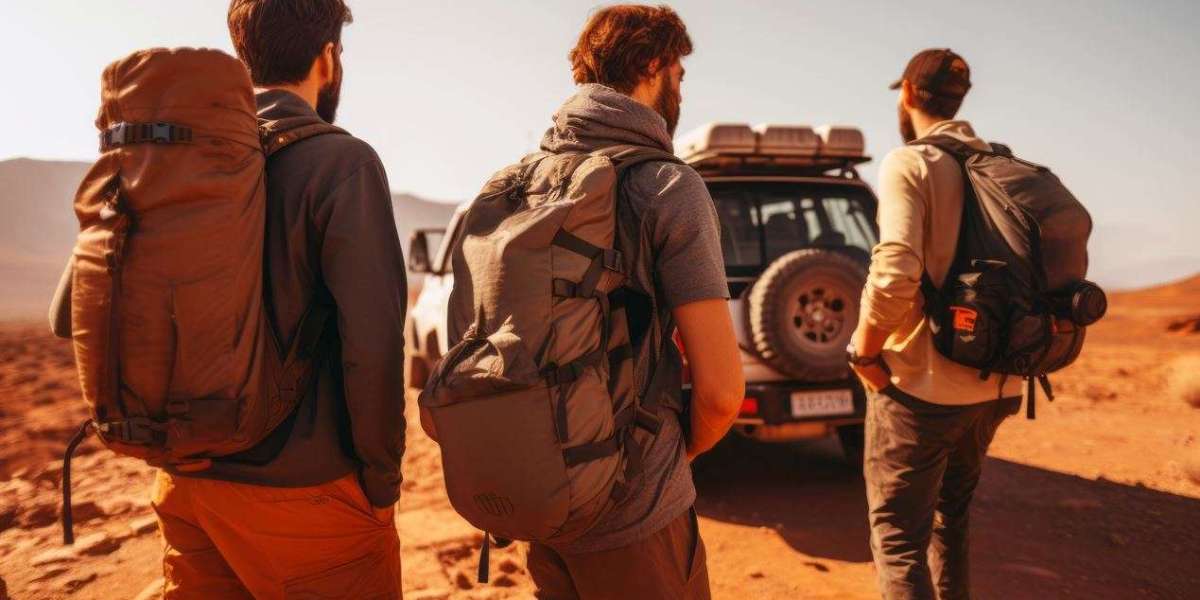Mountain trekking is a thrilling adventure that offers breathtaking views, fresh air, and a chance to connect with nature. However, it also comes with its share of challenges, and one of the most common nuisances trekkers face is dealing with insects and bugs. These tiny creatures can turn a pleasant trek into an uncomfortable experience if not managed properly. Whether you're embarking on an Atlas Mountains trek or exploring other mountain ranges, in this article, we’ll explore various strategies and tips on how to deal with insects and bugs while mountain trekking.
Understanding the Common Insects on Mountain Trails
Before you can effectively deal with insects, it’s essential to know what you might encounter. Mosquitoes, ticks, flies, and ants are some of the most common insects found on mountain trails. Each of these insects poses different challenges and requires specific measures to manage.
Mosquitoes
Mosquitoes are notorious for their itchy bites and potential to transmit diseases. They are most active during dawn and dusk and are commonly found near water sources.
Ticks
Ticks are small arachnids that can attach themselves to your skin and feed on your blood. They are often found in grassy and wooded areas and can transmit Lyme disease and other infections.
Flies
Flies, including horseflies and black flies, can be a nuisance with their persistent buzzing and painful bites. They are usually active during the day and are attracted to sweat and food.
Ants
Ants, especially fire ants, can deliver painful stings and bites. They are often found near campsites and on the ground where food crumbs are present.
Preparing for Your Trek: Preventive Measures
Preparation is key to minimizing the impact of insects during your trek. Here are some preventive measures to consider:
Clothing Choices
Wearing the right clothing can significantly reduce your exposure to insects. Opt for long sleeves, long pants, and light-colored clothing, as insects are less attracted to light colors. Additionally, consider wearing insect-repellent clothing that has been treated with permethrin.
Insect Repellents
Using insect repellents is one of the most effective ways to keep insects at bay. DEET, Picaridin, and natural repellents like lemon eucalyptus oil are popular choices. Apply the repellent to exposed skin and reapply as necessary.
Campsite Selection
Choose your campsite wisely. Avoid setting up camp near stagnant water, as it attracts mosquitoes. Look for elevated, breezy spots, as wind can help keep flying insects away.
Gear and Equipment
Ensure your tent has a fine mesh to keep insects out, and always keep it zipped up. Use a bug net for added protection, especially when sleeping.
On the Trail: Staying Vigilant
While on the trail, staying vigilant can help you avoid insect bites and stings. Here are some tips:
Check for Ticks Regularly
Ticks can be challenging to spot due to their small size. Conduct regular tick checks on yourself and your trekking companions, paying special attention to areas like the scalp, behind the ears, and the armpits.
Avoid Fragrances
Insects are attracted to strong fragrances. Avoid using scented lotions, perfumes, and deodorants that can attract bugs.
Keep Moving
Insects, particularly mosquitoes and flies, are more likely to bother you when you’re stationary. Keep moving to reduce your chances of being bitten.
Stay on the Path
Staying on designated trails minimizes your exposure to insects hiding in tall grass and dense vegetation. It also helps protect the natural environment.
Dealing with Insect Bites and Stings
Despite your best efforts, you might still get bitten or stung. Knowing how to treat insect bites and stings is crucial for your comfort and safety.
Mosquito Bites
Mosquito bites can cause itching and swelling. Apply a cold compress to reduce swelling and use over-the-counter anti-itch creams or antihistamines to alleviate itching.
Tick Bites
If you find a tick attached to your skin, remove it promptly with tweezers. Grasp the tick as close to the skin as possible and pull it out steadily. Clean the area with antiseptic and monitor for any signs of infection.
Fly Bites
For fly bites, clean the area with soap and water and apply an antiseptic. If the bite becomes painful or swollen, use an ice pack and take an antihistamine if necessary.
Ant Bites
Ant bites, especially from fire ants, can be painful. Clean the area with soap and water, apply a cold compress, and use an over-the-counter pain reliever if needed.
Natural Remedies for Insect Bites
For those who prefer natural remedies, there are several options to soothe insect bites and stings.
Aloe Vera
Aloe vera has anti-inflammatory properties that can help reduce swelling and soothe itching. Apply fresh aloe vera gel directly to the bite.
Baking Soda
A paste made from baking soda and water can help neutralize the itching and discomfort from insect bites. Apply the paste to the affected area and let it sit for a few minutes before rinsing off.
Honey
Honey has natural antibacterial properties and can help soothe insect bites. Apply a small amount to the bite and cover with a bandage.
Long-Term Strategies for Insect Management
In addition to immediate measures, consider long-term strategies to reduce insect problems on future treks.
Educate Yourself
Learn about the types of insects common to the areas you plan to trek. Knowing what to expect and how to handle specific insects can make a significant difference.
Plan Your Trekking Season
Insects are more active during certain seasons. Plan your treks during periods when insect activity is lower, such as early spring or late fall.
Improve Personal Hygiene
Keeping yourself clean and free of sweat can reduce your attractiveness to insects. Regularly wash with unscented soap and keep your clothes clean.
Using Technology to Combat Insects
Modern technology offers several tools to help manage insects while trekking.
Electronic Repellents
Electronic insect repellents emit ultrasonic waves that deter insects. These devices are compact and can be clipped to your gear.
Insect Traps
Portable insect traps use light and attractants to lure and trap insects. These can be useful around your campsite.
Wearable Technology
Wearable devices that emit insect-repelling frequencies or contain built-in repellents are becoming increasingly popular. Consider investing in such gadgets for added protection.
Conclusion
Dealing with insects and bugs while mountain trekking can be challenging, but with the right preparation and strategies, you can minimize their impact on your adventure. From understanding the common insects you might encounter to using preventive measures, staying vigilant on the trail, and knowing how to treat bites and stings, these tips will help ensure a more enjoyable and comfortable trekking experience. Remember, the key is to stay informed, prepared, and proactive in managing insects, so you can focus on the beauty and excitement of your mountain trek. Happy trekking!






